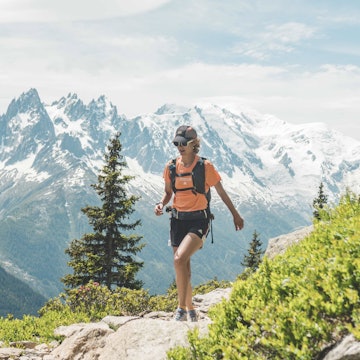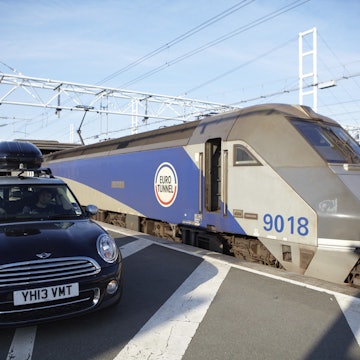
How to plan a biking trip to New Zealand’s Southern Lakes and Central Otago regions

Nov 11, 2024 • 4 min read

Some of New Zealand’s most thrilling “Great Rides” for cyclists are in and around the Southern Lakes and Central Otago regions © iStock
In Lonely Plan-It, we take you step by step through how we planned some of the most complicated travel adventures. Here, Craig McLachlan explains how to make the most out of your biking adventure to this South Pacific paradise’s deep south.
New Zealand has gone wild for cycling, with off-road, unpaved, purpose-built bike trails now found throughout the country.
Enthusiasts can thank a government initiative to attract international visitors, get Kiwis out on their bikes to explore their own backyard and to re-energize struggling rural regions. While there are now 23 spectacular “Great Rides” (Ngā Haerenga New Zealand Cycle Trails), the absolute highlights are down south around the Southern Lakes resorts of Queenstown and Wānaka, and in nearby Central Otago.
Start planning your two-wheeled adventure now with our insider tips and advice.

Step 1: Select the right season
When considering your trip, keep in mind two factors: New Zealand is in the southern hemisphere, meaning the seasons are opposite to the northern half of the globe, and it gets colder the further south you go. The Southern Lakes and Central Otago region’s hub is Queenstown, latitude 45°S – halfway between the equator and the South Pole. (This is the equivalent of southern France and northern Oregon in the northern hemisphere.)
While Queenstown and Wānaka are ski resorts, there’s seldom snow at lake level, even in mid-winter. This means that most of the day-trip bike trails are accessible year-round – though locals consider the warmer months of the year (October to April) prime biking season. Queenstown Airport receives direct international flights from Australia and the region is particularly popular during the New Zealand and Australian summer school holidays in December and January. Book accommodation and flights well ahead if visiting during these months.
February, March and April are the ideal months to visit, with local families back at work and school. Even better, there’s warm, settled weather in February and March, plus stunning autumn colors in April.
Step 2: Travel light and rent everything you need once you land
New Zealand is a long way from anywhere, and virtually all international visitors arrive in these remote islands by plane. There’s no need to take your own bike: Queenstown, Wānaka and the Central Otago towns of Cromwell and Clyde have everything visiting cyclists could require. Rental outlets offer both off-road e-bikes and regular cycles, while outdoor stores stock everything you could possibly need while out on the trails. In short, all you need to pack is the appropriate clothing.

Step 3: Pick the trails that suit you just right
If the idea of staying in an internationally renowned, year-round resort and mixing in your biking with a huge variety of other activities appeals, base yourself in Queenstown. You'll have a number of relatively easy day trips to choose from on the Queenstown Trails, a network of over 130km (80 miles) of off-road biking trails that connect with one another. This vibrant town also boasts some of the country’s top restaurants, cafes and bars and has an electric nightlife.
Consider following the Kawarau River on the Queenstown-to-Arrowtown trail, or continuing out to the Gibbston Valley wineries, then taking a post-tasting shuttle back to Queenstown. Alternatively, bike the Frankton Track and Kelvin Peninsula Trails, potentially heading back to town on the lake using Queenstown Ferries.

If you’d like to get away and explore a less-visited area, consider staying in Clyde in Central Otago, an hour east of Queenstown by car. There are excellent one-day rides around here, including the Lake Dunstan Trail, which connects Cromwell and Clyde. This 41km (25-mile) trail features boardwalks clipped on to sheer-rock walls, an 86m (282ft) suspension bridge and even a floating cafe. It’s considered best for the confident and reasonably experienced; if you’re a novice, warm up with some other trails before taking it on. Check out Trailhub for the scoop on Central Otago’s bike trails.
The ride that inspired the New Zealand government to invest in bike trails in the first place is the Otago Central Rail Trail, a 152km (94-mile) route from Clyde to Middlemarch, which opened as a bike and walking trail in 2000 and totally revitalized the region. The magnificent trail follows former railway viaducts, tunnels and station sites. It’s an easy three-to four-day ride with a minimal gradient, as it was designed for steam engines of old. This is a great route for families; a number of companies, such as Trail Journeys, offer packages that include bikes, accommodation and transport.
The best advice…
Give yourself plenty of time in New Zealand’s deep south, and do some homework before you set out. There are just so many options.
New bike trails continue to be constructed, and by the end of the decade it will be possible to ride from Queenstown or Wānaka all the way to Dunedin on the South Island’s east coast. You may even want to consider tackling Tour Aotearoa, a 3000km (1864-mile) bike-packing trip stretching the length of the country.















